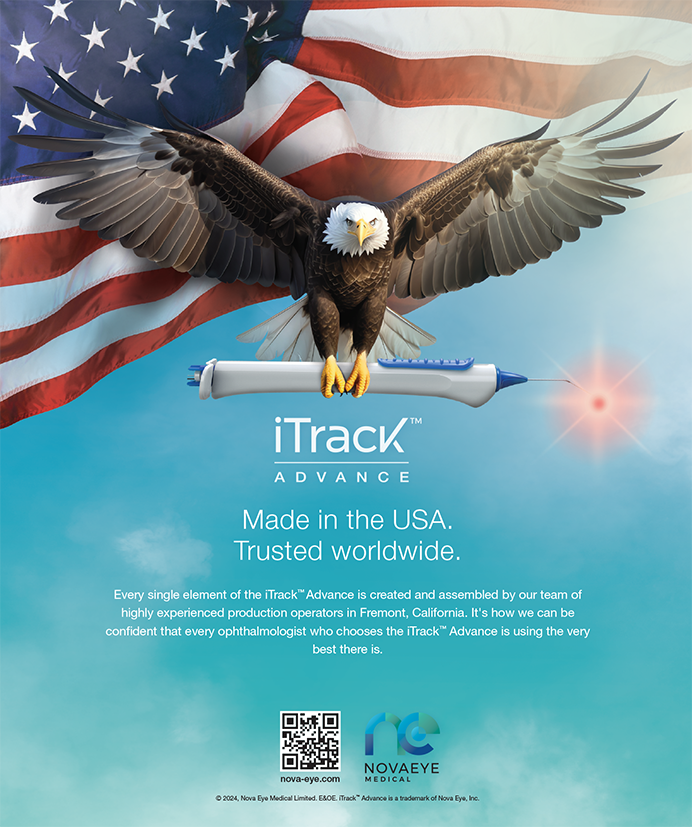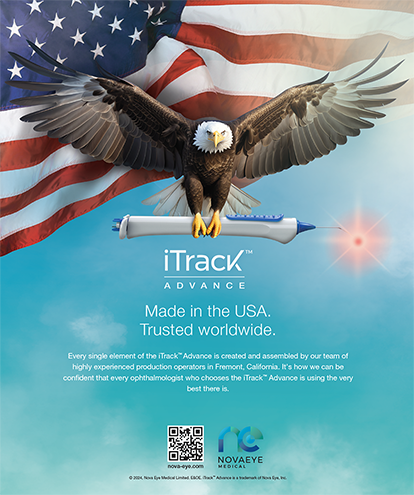What trends have you observed and outcomes have you achieved with presby-LASIK?
WILLIAM I. BOND, MD
I do not want to draw any sweeping conclusions about presby-LASIK, because I have only performed this procedure on 40 to 45 patients. Nevertheless, I have noticed a few emerging trends. For example, I expected a greater frequency of unwanted visual phenomena (glare, halos, ghost images, problems with night vision) from my presby-LASIK patients; so far, this has not been my experience. Also, I have learned that it is critical to not overpromise reading vision, because patients will require strong light for reading after the procedure. Furthermore, problems with dry eye and the ocular surface have not been more prevalent after presby-LASIK versus traditional LASIK, but these problems are more detrimental to patients' vision after the former.
What I have found most striking is the unanimity with which potential patients want the procedure. I believe my market is enormously price sensitive (maybe everyone finds that). There is an up-charge for presby-LASIK—not huge but not negligible. Nonetheless, every patient of mine over 40 who has been a candidate has chosen presby-LASIK over regular LASIK.Ê
MICHAEL GORDON, MD
Over the past 1.5 years, my colleagues and I have treated about 200 patients with presby-LASIK. Using the P Curve/Presbyopic Multifocal LASIK technique devised by Roberto Pinelli, MD, we combine a hyperopic and myopic correction in each eye at different optical zones with the Allegretto Wave laser (Alcon Laboratories, Inc., Fort Worth, TX [formerly WaveLight, Inc.]). The goal of this procedure is to create negative spherical aberration and a negative, prolate, Q shape to increase depth of field, rather than to create separate focal points.
Thus far, our results have been excellent. Average distance visual acuity is 20/20, and average near visual acuity is J2 (measured binocularly), with 95% of patients seeing at least 20/30 at distance and J3 at near. The only disadvantages associated with the procedure include an increased enhancement rate compared with traditional LASIK (approximately 8% more than LASIK) and delayed stabilization of patients' final distance vision, which usually occurs 3 months after surgery. Overall, the potential and real risks are no different than with LASIK.
GUY M. KEZIRIAN, MD
I think it is important for surgeons to understand that presby-LASIK will provide a limited effect for a narrow range of patients. Patient selection is important, which is another way of saying that the opportunity for disappointment is high.
Because the results of the procedure depend greatly on the size of the pupil, they vary significantly among patients. These treatments are sensitive to decentration. Any degree of misalignment, error in the location of the visual axis, or shift in the pupillary centroid with accommodation or dilation can cause unwanted symptoms for patients. In addition, DataLink (SurgiVision Consultants Inc., Scottsdale, AZ) data show that the amount of the laser treatment directly correlates with the visual effect. Higher degrees of correction induce greater amounts of spherical aberration and produce more improvement in near vision. The potential for side effects such as glare, halos, and decreased contrast sensitivity, however, is also greater. Finally, laser treatments can have only a limited effect on presbyopia.
We can create only so much spherical aberration before we degrade visual quality. Presby-LASIK therefore relies on the patient's having some residual accommodation. The DataLink registry suggests that presbyopic laser vision correction is best suited to young presbyopes between 50 and 55 years of age.
Surgeons performing presby-LASIK should select candidates carefully and educate them thoroughly. Recipients should be willing to sacrifice the clarity of their near and distance vision. They should expect glare at nighttime and decreased vision in low light. Because the procedure will reduce their contrast sensitivity, print will appear gray and dim rather than black and sharp. Also, patients must understand that the treatment is not a permanent solution for their presbyopia; it will only delay lenticular correction or their need for glasses.
I feel that presby-LASIK sacrifices quality for minor improvements in quantity. I hope that surgeons will use the technique prudently.
ROY S. RUBINFELD, MD
Having followed for more than a decade the unimpressive results of several approaches to treating presbyopia with the excimer laser, I was skeptical when I initially heard about the development of presby-LASIK by Roberto Pinelli, MD. Because I sometimes think that providing clear distance, intermediate, and near vision for presbyopes is the Holy Grail of laser vision correction, however, I have kept an open mind. One year ago, my innovative and trusted colleague, Michael Gordon, MD, told me that presby-LASIK was working very well in his hands. Now, I perform this procedure on more than 30% of my LASIK patients, and the results are astonishing.
After several months of using this technique, I visited Dr. Pinelli in Brescia, Italy. Despite my broken Italian and his broken English, I was able to learn directly from the source. I developed a useful way to select optimal candidates for presby-LASIK. After pushing plus and obtaining the patient's best possible manifest refraction, I demonstrate to him or her what vision of 0.25 to 0.50 D of myopia would be like. If patients say, "This is pretty good," then they are good candidates. If they dislike it, I generally do not offer presby-LASIK. When I shared this technique with Dr. Pinelli, he responded, "Bravo."
After presby-LASIK, most patients are mildly myopic, a result that tends to regress over 3 months. It is critical to make the ocular surface as pristine as possible prior to the procedure. It is also necessary to aggressively treat dry eye after surgery. Eyes are more prone to dryness after presby-LASIK than traditional LASIK. It is also key to tell presby-LASIK patients that they will not be undergoing the same laser procedure that their friends (especially younger ones) have. It takes longer for vision to stabilize after presby-LASIK than traditional LASIK. I have several patients in their 70s, however, who underwent the procedure and now read 20/20 at distance and J1 at near with great ease. In short, I have found presby-LASIK to be a promise fulfilled and a legitimate, major advance in our field.
STEPHEN G. SLADE, MD
My colleagues and I perform presby-LASIK on carefully selected patients. We use an off-label, "double card" treatment that adds negative asphericity by altering the midperiphery of the cornea. The results are dependent on the patient's age, residual accommodation, and pupillary size, among other factors. Many 45- to 55-year-old presbyopic patients have a great need for vision correction. I believe we should continue to cautiously investigate corneal techniques such as presby-LASIK to determine if they can truly help this segment of the population. Certainly, more work and controlled studies are needed.
Section editor John F. Doane, MD, is in private practice with Discover Vision Centers in Kansas City, Missouri, and he is a clinical assistant professor for the Department of Ophthalmology, Kansas University Medical Center in Kansas City, Kansas. Dr. Doane may be reached at 816) 478-1230; jdoane@discovervision.com.
William I. Bond, MD, is the medical director of Bond Eye Associates in Pekin, Illinois. Dr. Bond may be reached at (309) 353-6660; pekineye@yahoo.com.
Michael Gordon, MD, is a partner in the Gordon Binder & Weiss Vision Institute in San Diego. He is a consultant to Alcon Laboratories, Inc. Dr. Gordon may be reached at mgordon786@aol.com.
Guy M. Kezirian, MD, is a board-certified ophthalmologist. He is the president of SurgiVision Consultants, Inc. (www.surgivision.net), an ophthalmic consulting and software company in Scottsdale, Arizona. Dr. Kezirian may be reached at (480) 664-1800; guy1000@surgivision.net.
Roy S. Rubinfeld, MD, is in private practice with Washington Eye Physicians & Surgeons in Chevy Chase, Maryland. He is also a clinical associate professor of ophthalmology at Georgetown University Medical Center/ Washington Hospital Center in Washington, DC. Dr. Rubinfeld may be reached at (301) 654-5290; rubinkr1@aol.com.
Stephen G. Slade, MD, is a surgeon at Slade and Baker Vision in Houston. Dr. Slade may be reached at (713) 626-5544; sgs@visiontexas.com.


